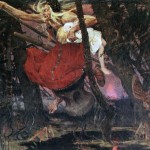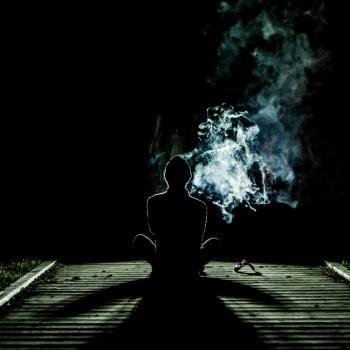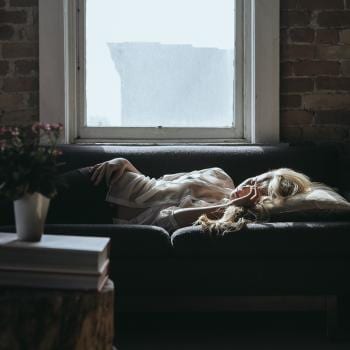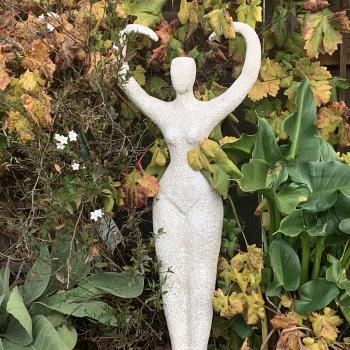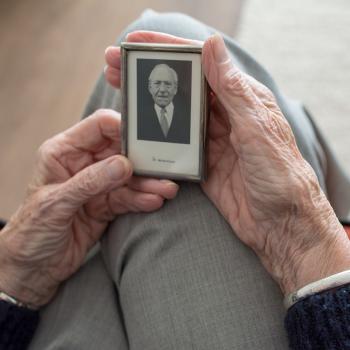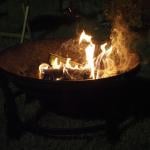Picture this – A grove, deep in the woods, lit by a raging bonfire. The deep thump of a drum calls to the witches hidden in the darkness. Cloaked figures come forward from the shadows and create a circle, swaying in time with the rhythm. The ritual begins, everything and everyone is duly called and eventually everything culminates with a cone of power being thrust up into the sky as ritualists collapse onto the forest floor, spent from their endeavours. The sound of the drums still echoes in their ears and reverberates across the land.
It sounds like a scene from a movie but this kind of thing really does happen, at least it does happen for me (sometimes) and I hope it has happened for you too.
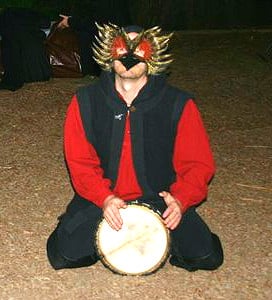
An integral part of most Reclaiming rituals is allowing an ecstatic state to arise. There are all sorts of methods and techniques that can be employed to help this happen and one such tool is drumming. Now drumming has been used in ritual ever since the first humans banged two objects together and thought that the sound was pretty cool. Take a few minutes to search around on the internet and you can find a wealth of articles and papers on the history of drumming in ritual. Drums and rattles and shakers and all sorts of noise makers were used for ritual purposes all over the ancient world and, in fact, still are today.
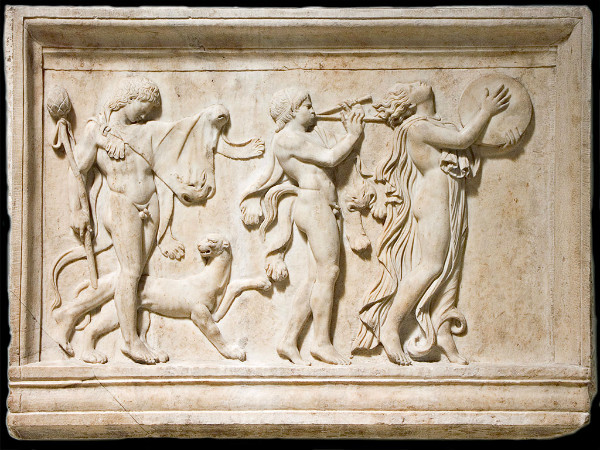
I was recently invited back to participate in a private, four day, ecstatic, magical event that culminated with a lengthy and profound piece of devotional work. I was asked to attend one of the day-long rituals and to lead and hold sacred space by drumming. Now this gathering really highlighted for me how ritual drumming can be used in support of ecstatic work and how it can be employed as a way to provide another doorway into experiencing the divine, our gods and goddesses, or our own “outer limits”
For the first two hours, I created a soundscape that supported the beginnings of the ritual, namely the preparation for the arduous tasks to come. I kept a simple, repetitive rhythm with my djembe and with an egg shaker. My job was to match the energy of the participants, to encourage a place that would enhance their work or, at least, give them an anchor to return to if their focus wandered.
The last three hours was…was…indescribably beautiful. I set the tone of the ritual space by playing a sruti box, djembe, tambourine and by singing a lilting, wordless chant. The combination of the drone, steady drumbeat and the melody served as a backdrop for the participants to sink into their own magical processes. People began to sway and add their voices to the chanting. Eyes closed, bodies moved, tears came.
After an hour or so, I put down the other instruments and focused solely on drumming. What I’ll say about it is that I drummed like I have never drummed before. I strove to connect with each participant and meet them right where they were in their process. There were moments of deep anguish, pain, pleasure, release, joy and pure ecstasy. My priestessing work was to be invisible, yet present. I was there as a deep witness and as an instigator. I would join the journey but not give directions. As one person said, they wanted the drumming to be something they could lean into, a pillar of energy they could be supported by, even when their own process made it hard to hear anything.
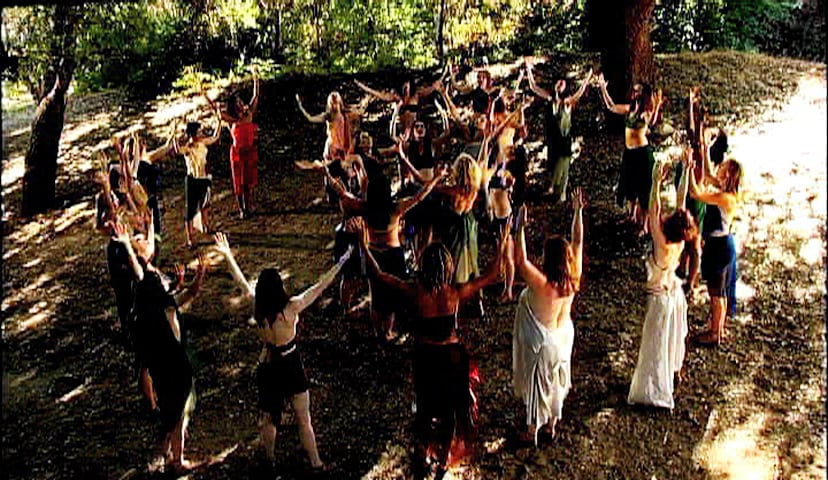
I have a final few thoughts on the gathering this past weekend. Last year, these folks were not “my tribe” but that has shifted dramatically. I feel entirely welcome into their community. Their work is unlike any other I have seen and I am truly humbled to witness their devotion. Throughout the ritual, I thought of my teachers and those that have encouraged my work as a priestess and ritual drummer. To them I am more grateful than words can say.
I’ve spoken with many ritual goers and ritualists over the years. There’s an ongoing and evolving conversation about how best to use music, and especially drumming, in ritual space. My personal feelings tend to lean toward the idea of drumming being used as an accent, an enhancement. Drumming might be like adding spice to a favourite meal, not enough and there’s no point in having it. Too much and it overpowers the dish altogether.
I’m curious to hear from priests, priestesses, ritual goers and ritualists, musicians and non-musicians – Where has music (not limited to drumming, perhaps) worked to enhance a ritual? What could be done to improve that for you? In what ways have you worked with musicians to communicate the intentions of the ritual so that they can make better choices?
Notes: I’ve had the distinct honour of learning ritual drumming from some amazing ritual musicians. It’s important to note, that while my drumming style references traditional African or Middle Eastern rhythms or techniques, out of respect for my teachers, their teachers and the cultures that this rhythms come from, I never claim to be drumming traditionally. Baba Olatunji, from Nigeria, is credited as one of the foremost traditional drummers and often cited as the person that brought drumming to the West. Watch this video to see what excellent African drumming looks and sounds like– https://www.youtube.com/watch?v=51O2ymTtsR8
You can like our Facebook page at The Witches Next Door. For more great articles visit Patheos Pagan on Facebook and like that page too . All you gotta do is click on those links.

